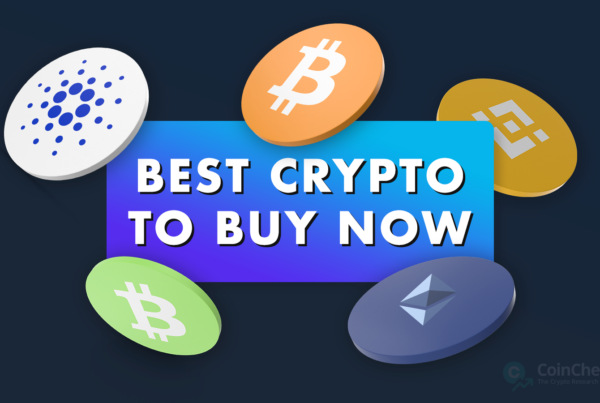Following the prolonged bullish trend that started in mid-July, which saw the total cryptocurrency market capitalization rapidly climb towards the previous peak valuation of $2.55 trillion reached in May 2021, last Tuesday’s flash crash left a considerable dent and put a halt on the upwards momentum. On the tailwind of the historical news of El Salvador being the first nation to officially adopt Bitcoin as a national currency on September 9, the price of Bitcoin reached a four-month high. It wasn’t for long, however, as the cascade of long position liquidations that occurred on the same day pushed the price of the world’s largest cryptocurrency below the $50,000 mark, and towards the $43,000 support level. Along with Bitcoin, the rest of the cryptocurrency market experienced heavy double-digit losses, which, in most cases, have yet to be recovered. As of now, Bitcoin’s dominance is at approximately 40% and continues to drop. The last time it was this low was in May of this year, and before that way back in June 2018. The market metrics show that altcoins are gaining ground. Solana personifies this trend. With more than a 300% monthly increase and over 100-fold YTD gains, the highly scalable decentralized blockchain has grown to become the 6th largest crypto by market cap. IOTA, which we’ve featured in our previous installment of Coins to Watch, scored a major win last week as the European Union decided to use IOTA’s technology to develop Europe’s blockchain infrastructure. With so much potential brewing in the blockchain sector, we went on the lookout to find the best projects.

3. Quant (QNT)
With the rise of DeFi, blockchain interoperability has grown to become one of the more sought out after features in the cryptocurrency space. Quant is among the leading protocols that provide seamless interactions between various blockchains. The platform’s Overledger DLT gateway enables institutions and individuals to connect to different systems and DLT networks without the need for new infrastructure. Since being founded in 2015, Quant has managed to secure partnerships with some of the industry leaders, including SIA, Oracle, and Amazon.
Overledger 2.0.5 update brings significant protocol improvements, Quant Developer Program incentivizes ecosystem growth
The latest upgrade to Overledger brings exciting new capabilities to the Quant protocol. Firstly, the 2.0.5 update brings significant improvements to the Overledger Payment API, which now allows users to transact and settle value between various crypto assets in a much simpler manner. Secondly, and perhaps most importantly, the new upgrade bridges institutional networks with stable digital currencies, DeFi, non-fungible tokens (NFTs), and a long list of supported ERC20 and ERC721 tokens. As of the latest upgrade, Quant now offers native DLT payment support, collateralising of supported NFTs with stablecoins, and new settlement options for lending and staking products. On top of the milestone development goal the company managed to achieve with the latest upgrade, Quant’s Developer program is attracting a growing number of developers to the ecosystem, particularly due to the fact that building decentralised apps using the Overledger API guarantees universal interoperability and easy creation of multi-DLT apps (mDApp). Quant provides access to educational material, expert feedback, and exclusive events for developers. The market is definitely taking notice of what Quant is doing lately as the price of QNT doubled in the last week and increased by over 30-fold since the beginning of the year.

2. Terra (LUNA)
Terra is a blockchain e-commerce payment network that uses the functionality of fiat-pegged stablecoins to provide much-needed stability when conducting cross-border payments. Additionally, the network’s native utility and staking token, LUNA powers the blockchain capabilities and acts as the platform’s reserve currency. In addition to the LUNA token, the platform also uses a native, algorithmically controlled, and decentralized TerraUSD (UST) stablecoin. Using the Cosmos technology and Proof-of-Stake (PoS) consensus mechanism, the South Korean-based company Terraform Labs has managed to build a digital payment system that is poised to rival ApplePay, SamsungPay and other established payment solutions. By using blockchain technology with a particular focus on stablecoin functionality, Terra is capable of offering extremely low processing fees, almost instantaneous settlements and seamless international transactions.
Columbus-5 upgrade is going live on September 30, bringing token burning mechanism and interchain support
Although the Columbus-5 mainnet deployment was delayed and pushed back for three weeks, it is now all but confirmed that the “gamechanger” update for the Terra platform will go online by the end of September. Columbus-5 will significantly increase scalability and make the platform capable of withstanding much higher traffic due to a new version of Mantle and the ability to process Wasm queries. The upgrade is also expected to make the process of swapping stablecoins simpler while giving LUNA token stakers the benefit of receiving swap fees. Additionally, once the largest mainnet deployment in Terra’s history is complete, the platform will be able to support interchain assets from Cosmos, Polkadot, and Solana blockchains. It is safe to say that the market is eagerly awaiting the upcoming mainnet deplyoment. Since the start of August, the price of LUNA has more than quadrupled as the community looks forward to seeing how the upgrade pans out. José Maria Macedo, a founding partner at the research firm Delphi Digital, shared his insightful observations and near-term expectations for the project in a Twitter thread.

1. Fantom (FTM)
Fantom is an open-source decentralized finance (DeFi) platform built for fast and high-throughput smart contract functionality. The network uses aBFT consensus protocol to ensure high performance and seamless platform scalability as well as secure and near-instantaneous transactions paired with extremely low fees. EVM compatibility makes Fantom compatible with Ethereum, which means that dApps designed for ETH can be deployed and run directly on the Fantom platform. Fantom offers an all-encompassing suite of DeFi products and services, ranging from liquid staking and automated market maker (AMM) exchange functionality, to cryptocurrency lending, borrowing and staking options that are used to their fullest potential when using the network’s native FTM token.
Fantom Foundation announces a massive 370 million FTM incentive program, FTM price surges by almost 300%
Fantom experienced a massive market boost with the announcement of a 370 million FTM (worth over $550 million USD at current market rates) incentive program designed to onboard new blockchain protocols and increase the amount of liquidity in the Fantom ecosystem. The program is open to every developer team who decides to deploy on the platform. The reward for interested protocol teams are based on their total value locked (TVL) and ranges from 1 million up to 5 million FTM. The team hopes that the incentive program will be beneficial to users, builders and for the long-term success of the ecosystem. The market has responded in kind as the price of the digital token exploded from $0.63 on the day of the announcement on August 30, to an ATH of $1.92 on September 9, before retracing to $1.49 at press time. The recent success of Fantom is perhaps most evident when looking at the total value locked figures. The total amount of locked assets nearly doubled since the incentive program started and now sits at $1.34 billion, with SpookySwap exchange and Curve protocol topping the TVL rankings. Additionally, Fantom’s long-awaited integration with Orion, which was initially announced in April, is finally coming later in the month, which will further increase platform functionality by enabling users access to endless cross-chain liquidity directly from their Fantom wallet. On top of that, cryptocurrency exchange Profit Global announced Fantom integration last week, and commended the network’s ability to process a higher number of transactions than Ethereum with an almost 2.5x cheaper average transaction fee. For reference, on September 11, Fantom processed 1.727 million daily transactions compared to ETH’s 1.249 million.



